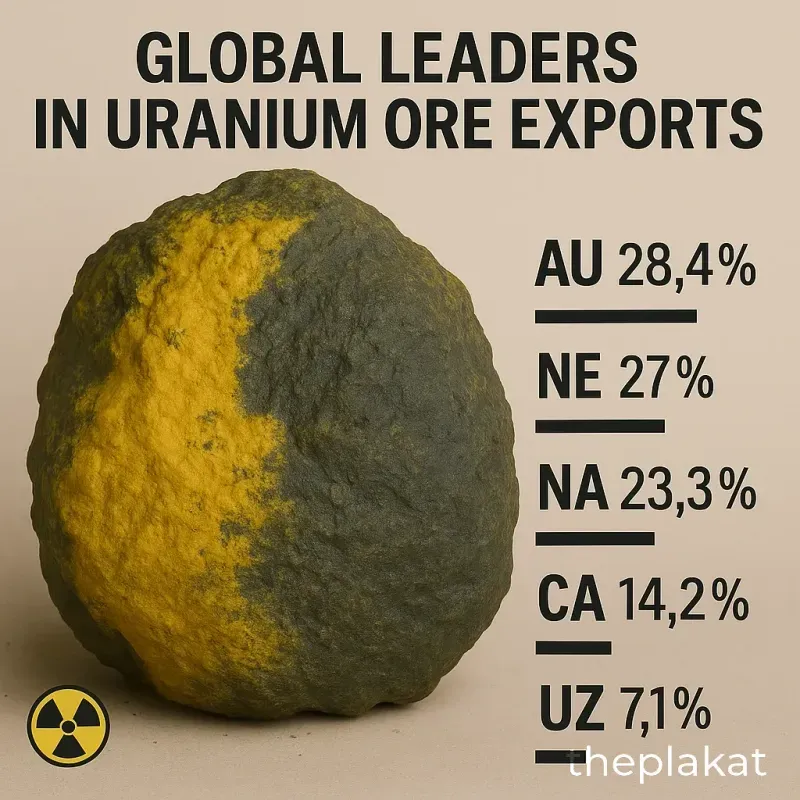Published
in Economy
In 2023, Australia led the world in uranium ore exports, capturing a significant share of the global market. Other prominent players include Niger, Namibia, Canada, and Uzbekistan. This article delves into these markets' contributions and dynamics.
Australia firmly holds the top spot in the uranium ore export market with a 28.42% share. The country's vast reserves and mining technology contribute to its leading position, impacting global supply chains significantly.
Niger and Namibia also play crucial roles in uranium ore exports, with market shares of 27% and 23% respectively. Their contributions underlie regional mineral wealth, with emerging mining projects continually adding to economic growth.
Canada ranks fourth with a 14.14% market share. The country's advanced mining technology and established infrastructure bolster its steady output, supporting energy needs across various regions.
While Uzbekistan's share stands at 7.06%, the nation is increasing its role through investment in new mining operations and international partnerships aimed at extending its market foothold.
Despite the significant shares of the top five countries, numerous other nations contribute less than 1% each to the total uranium ore export market. These countries like South Africa, Spain, and others collectively shape market dynamics through smaller yet impactful exports.

Uranium ores are primarily used to produce nuclear fuel for power generation in nuclear reactors, which is a significant part of the world's energy supply.
Australia, Niger, and Namibia are among the largest exporters of uranium in 2023, each playing a vital role in global supply chains.
Uzbekistan, while not the largest contributor, holds a noteworthy 7.06% share in global uranium exports, driven by investment in mining infrastructure and international collaborations.
In 2023, Canada provides 14.14% of the world's uranium exports, leveraging its advanced technological capabilities and established mining sector.